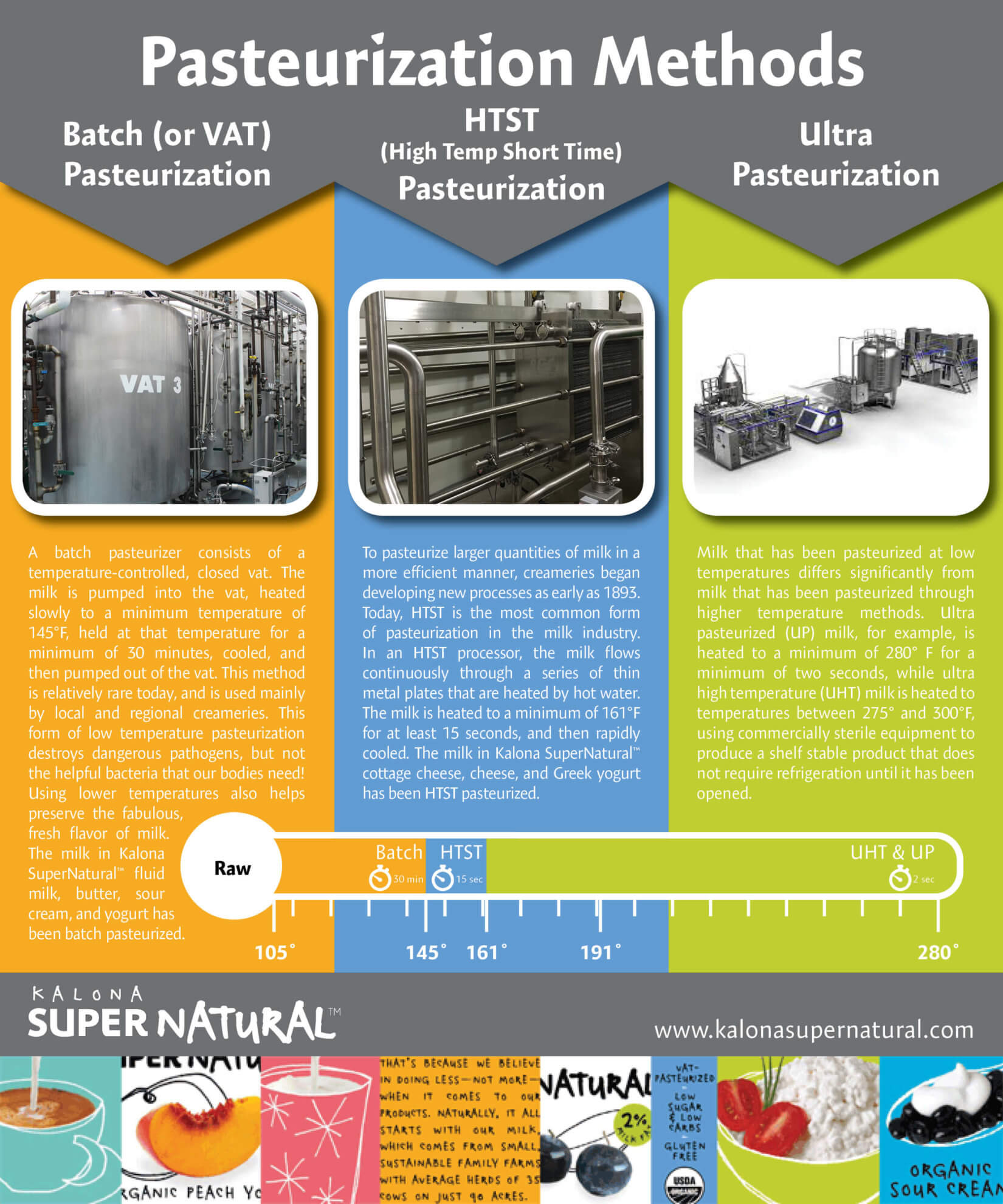
History of Pasteurization
The practice of using heat to extend the life of food dates to the Middle Ages, when wine and beer were heated to prevent them from souring. Thus, when Louis Pasteur developed the process of pasteurization in 1864, his goal was to lengthen the life of his favorite wine. Once it was discovered that pasteurizing milk not only lengthened its shelf life, but also destroyed deadly microorganisms that spread diseases, pasteurizing milk became a widespread practice in Europe, and slowly caught on in the U.S.
Reformers pushed for pasteurization in the U.S. in response to a growing public health crisis in the early 20th century: the spread of infectious diseases through unsafe “slop milk” produced in urban dairies that were located next to whiskey distilleries. In 1908, Chicago was the first city to require that all milk sold within its limits be pasteurized, and in 1924, the U.S. Public Health Service developed the Standard Milk Ordinance to assist states with voluntary pasteurization programs. By the late 1940s, all milk sold in the U.S. was required by law to be pasteurized. Historians agree that pasteurizing milk led to a significant decline in the spread of infectious diseases and the infant mortality rate in urban areas.
Different methods of pasteurization affect the taste and quality of milk in different ways.
What We Believe
At Kalona SuperNatural™, we believe that low-temperature pasteurization is preferable. First, low-temperature pasteurization destroys dangerous pathogens, but not the helpful bacteria that our bodies need. Lower temperatures also preserve the fabulous, fresh flavor of milk. Customers tell us that drinking Kalona SuperNatural™ milk takes them back to their childhood days of drinking fresh milk on the farm.
[flat_button text=”Download Infographic” title=”Download Infographic” url=”https://kalonasupernatural.com/wp-content/uploads/Pasteurization-Methods-Infographic-041416.jpg” padding=”10px 20px” bg_color=”#00A6CE” border_color=”#00A6CE” border_width=”1px” text_color=”#ffffff” text_size=”14px” align=”left” target=”_self”]
